Accessible Saint Patrick’s Day Crafts for Kids Who are Blind
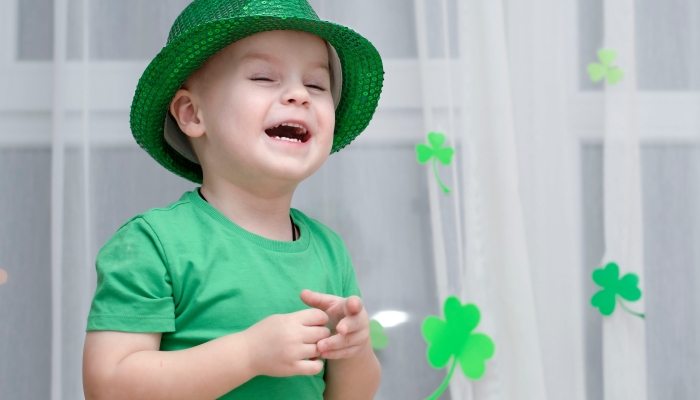
This post may contain affiliate links; please see our terms of use for details.
- Blind and visually impaired children should have access to the same education as their peers, though sometimes their access to arts and crafts is limited.
- Arts and crafts are fantastic for children with visual impairments because they provide a tactile learning experience that engages the child’s other senses.
- Saint Patrick’s Day crafts don’t have to be complicated; there are lots of simple craft activities you can try at home.
- Using a mix of different materials will allow your child a fun sensory learning experience. Be sure to add in different scents and sounds, too.
Saint Patrick’s Day takes place on the 17th of March each year. The day celebrates Saint Patrick and the arrival of Christianity in Ireland, though it’s now often used as an excuse to celebrate the heritage and culture of all things Irish. To celebrate St. Patrick’s Day, you might wear green clothing and decorate with leprechauns and shamrocks in a nod to Irish culture.
St. Patrick’s Day crafts for kids are a fun activity and a way of teaching your child about this significant cultural celebration. Crafts are a fantastic activity for children with visual impairments, and there are many accessible Saint Patrick’s Day crafts you can do at home with your child. From songs and slime to gluing and painting, there are plenty of fun St. Patrick’s Day activities your child will enjoy.
The wider variety of materials you can include, the better your child’s tactile experience will be. Don’t forget to engage their other senses, too. Adding essential oils to paints and slime can create a sensory experience. Scented pens are another way to turn a simple activity like St. Patrick’s Day coloring pages into a sensory treat.
Tactile Shamrock Decorations
Shamrocks are synonymous with St. Patrick’s Day, so decorating shamrocks is a fun and easy St. Patrick’s Day craft to do with your visually impaired child. This simple craft activity is a great thing to do on St. Patrick’s Day.
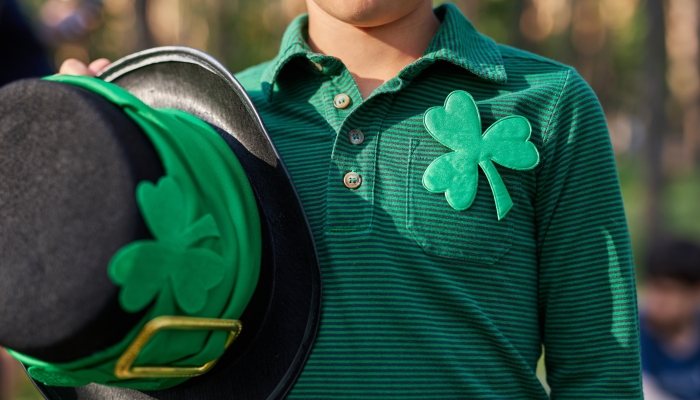
Materials Needed:
- Card paper
- Tracing wheel
- Glue
- Tactile green decorations such as pom poms, feathers, and beads
Instructions:
- First of all, you need to draw a shamrock shape on a piece of card paper. There are plenty of free St. Patrick’s Day printable templates online if you’re not skilled at drawing freehand. (Check out this free printable shamrock template!)
- Use a tracing wheel to go around the shamrock. This will create a raised outline on the other side of the paper so your visually impaired child can use their hands to explore the picture.
- Give your child the glue and let them squeeze or paste it over the inside of the shamrock.
- Now give them the tactile decorations and let them go crazy decorating their shamrock. Use decorations that excite your child’s senses and provide a tactile sensory experience.
This fun craft activity is excellent for developing your child’s fine motor skills, encouraging them to explore with their hands, and allowing them to get their hands dirty.
It’s also a craft they can revisit later as they explore the finished project with their hands, remembering the different materials they used in the piece.
Give The Leprechaun A Beard
You can’t have St. Patrick’s Day without a leprechaun, so this simple craft will give you a mascot for your celebrations.

Materials Needed:
- Leprechaun (Here’s a free printable from Printabulls.)
- Tracing wheel
- Glue
- Orange pom poms or yarn
Instructions:
- Use the tracing wheel to create a raised outline of your leprechaun.
- Ask your child to apply glue to the leprechaun’s face and glue the orange pom poms or yarn in place to give the leprechaun a beard.
This activity can be adapted for older kids by using paper plates instead of the free printable leprechaun. Use a hole punch to punch holes in the paper plate where the beard should be. Ask your child to thread orange yarn through the hole and tie it in place to give the leprechaun a beard. You can even ask them to trim the yarn to give the leprechaun a beard cut and improve your child’s cutting skills.
Musical Leprechaun Traps
A leprechaun trap is the perfect way to catch one of those cheeky St. Patrick’s Day celebrities. There are many easy leprechaun traps online you can make with your child; here, we’re going to make a musical one to engage your child’s auditory senses.
Materials Needed:
- An empty shoe box with a 3-inch hole cut in the lid
- Tactile “paving stones” around 1 inch big
- A xylophone
- Green paint and paintbrushes
- Chocolate gold coins
Instructions:
- Paint the shoebox and lid green.
- Once dry, place tactile paving stones across the lid towards the hole. You could cut shapes from textured card for your tactile paving stones, or alternatively, use flat smooth pebbles such as these.
- Place some chocolate gold coins on the opposite side of the hole. These are going to lure your leprechaun visitor into the trap.
- Place the toy xylophone against the side of the shoe box so it acts as a ladder for the leprechaun to climb onto the box and reach the first stepping stone.
- BRIGHT COLORS AND WONDERFUL TO TOUCH — These lightweight, colorful stones have immediate visual appeal plus their warm, smooth surface makes them a wonderfully tactile early math resource. Children will be fascinated by the pebbles’ bright colors, odd shapes and warm feel which make stacking even more fun.
- TEACH STEM — These plastic pebbles are great for stacking and developing fine motor skills. Use the multiple colored pebbles to make artistic designs or teach children counting and sorting exercises.
- AN EARLY MATH MANIPULATIVE — Young minds will love this hands-on teaching aid in learning how to count, add and subtract.
- DEVELOP LANGUAGE AND DESCRIPTIVE SKILLS — The vibrant colors and varying sizes of the pebbles inspire kids to practice their adjectives and talk about their designs.
Give your child a xylophone mallet and have them sound out the steps of the leprechaun as he makes his way toward the chocolate coins. Why not listen to some fun leprechaun songs while you craft, like this one by Music Box Kids?
Scented Pot of Gold
Create a tactile sensory experience for your visually impaired child by concocting a scented pot of gold for them to explore.

Materials Needed:
- Gold glitter slime made by following this Little Bins For Little Hands recipe
- Your chosen scent
- A pot for your gold
Instructions:
- Once you’ve made the gold glitter slime, all you need to do is add a few drops of your chosen scent to create a sensory slime experience your child will love. While you can stick to essential oils, there are specialist companies offering fun slime scents for that extra wow factor. We love these fun scents from SlooMoo Institute with inspired scents like Cotton Candy, Ginger Ale, and Birthday Cake.
- Pour the concoction into your pot. This could be a simple sensory tray, but if you want to go all out, a green St. Patrick’s Day cauldron kettle will look the part.
- Made of premium quality plastic, durable and sturdy.
- Cauldron size is 8-inch wide x 6-inch tall, and attached a black handle.
- NO hold in cauldron’s Bottom, so it’s can hold any objects, include liquid.
- This green color cauldron is perfect for St. Patrick’s Day party decorations. It’s big enough to put golden coins, candies, food, or drinks to share your luck, welfare with friends.
Understanding Blind Children’s Crafting Needs
Crafting is a valuable activity for blind and visually impaired children. Crafting requires concentration, fine motor skills, and hand-eye coordination.
Far from being just a fun activity, crafting provides a tactile sensory experience for children with visual impairments. Visually impaired children can work on their concept development skills, enhance the use of their other senses, and have fun exploring the materials while participating in a cute craft activity.
Sensory Engagement in Crafting
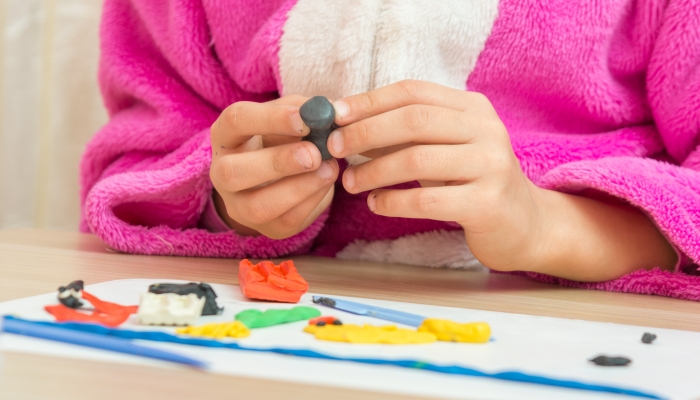
Children will likely come into contact with various materials during a crafting activity, which is perfect for engaging their senses. Visually impaired children can explore with their hands and learn about the different materials offered. From soft cotton balls to crinkly tissue paper and small, hard beads, crafts provide an engaging way for visually paired children to learn more about the world around them.
According to a review published in Sage Journals11. Llamazares de Prado, J. E., Arias Gago, A. R., & Melcon Alvarez, M. A.. Theoretical Review of the Creativity, the Key Factor in Education With Visual Impairment. Education and Urban Society. 2020;53(1), 68–82. https://doi.org/10.1177/0013124519896863 in 2020, “In the field of blind students, because of reduction of sensory input, learning occurs as result of the reciprocal tactile-kinesthetic and the auditory sense.”
These tactile experiences are invaluable for children with visual impairments. Not only do they help them to develop a better understanding of the wider world, they also boost the use of their senses. Consider the different sounds and smells of the materials and discuss these with your child while undertaking the craft activity.
Craft activities are a great time for language development. Describe the different textures, shapes, and objects as your child explores them. This will teach your child new words in a fun way and encourage them to get stuck in.
Safe Crafting Environments
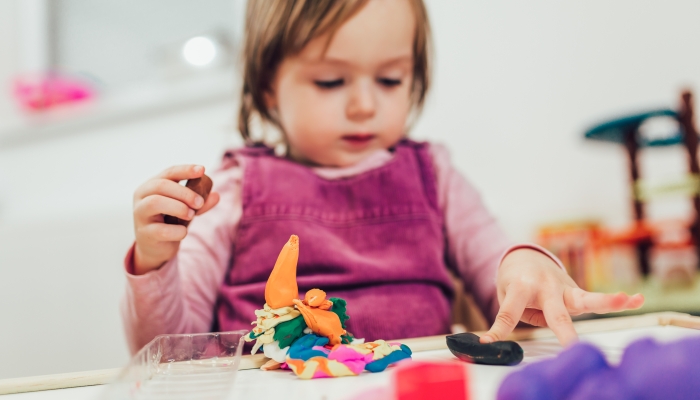
Crafts are a great way to encourage babies to develop multisensory skills. Babies and younger children, however, may explore materials with their mouths, so it’s important to ensure you supervise them at all times during craft activities.
Choose non-toxic, child-safe materials that your child can explore safely. Prepare for mess and ensure your child is wearing a protective apron over their clothes. Embrace the mess!
Tips for Assisting Blind Children in Crafting
Crafting is a great learning experience for children with visual impairments. Take an assisting role without taking over the crafting activity. Crafting with kids isn’t about creating perfect art; it’s about having fun, making a mess, and learning new skills.
Providing Verbal Guidance
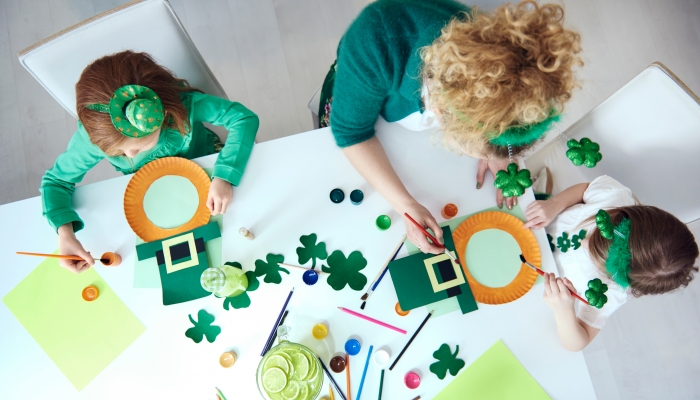
As you know, your child with visual impairments can’t look at a finished craft to see what’s expected of them. Instead, they will use your descriptions to understand the St. Patrick’s Day crafts. Here are some things to remember when providing verbal guidance during a craft activity:
Engage their other senses. When describing colors, you should engage the child’s other senses. Explain that yellow is warm like sunshine and that red is hot like fire. Blue is wet like water, and green is fresh like the countryside. Using descriptions like this will help your child build color associations that will be useful in their everyday life. For St. Patrick’s Day crafts, you’ll likely be using lots of greens, so it may help to describe the luscious greenery of rural Ireland.
Make it a conversation. You shouldn’t be the one doing all the talking. Rather than dictating the craft to your child, engage them in describing what they can sense. They will be able to explore the craft materials and explain what materials they have in front of them.
Keep it simple. Find clear, concise ways to describe the craft activity. Don’t keep talking to fill the silence. Offer minimal instructions and guidance where needed.
Encourage independence. Give your child space to explore for themselves and collaborate with you to create a fun craft activity. Your child can do things differently, mix up the craft activity, and go rogue. That’s fine, and in fact, it should be encouraged. As long as your child is having fun, that’s all that matters.
Fostering Creativity and Confidence
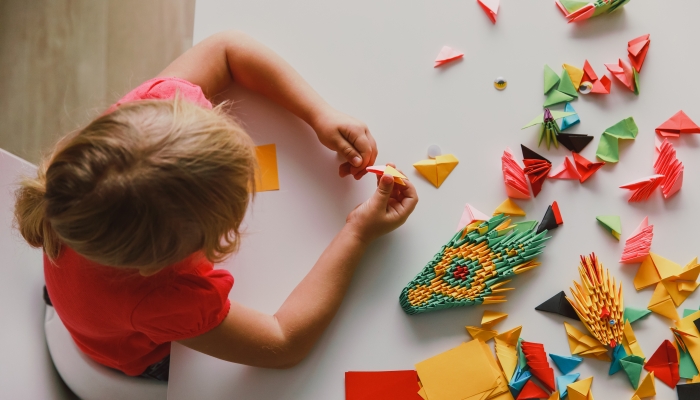
All children gain confidence by exercising their independence. If you want your child to gain confidence, encourage them to take the lead on their crafting. The less you help, the more independence they will gain.
When offering help, always ask if it’s wanted before starting to help. Your child may feel frustrated if you start taking over. If you want to participate, you could do your own craft activity next to them.
Be sure to follow their interests. If your child finds something they enjoy, give them ample opportunity to practice. For example, if your child enjoys origami, you could look for accessible Saint Patrick’s Day crafts that fit, like this Irish Shamrock origami craft from PaperKawaii.
Reference
- Llamazares de Prado, J. E., Arias Gago, A. R., & Melcon Alvarez, M. A. (2020). Theoretical Review of the Creativity, the Key Factor in Education With Visual Impairment. Education and Urban Society, 53(1), 68–82. https://doi.org/10.1177/0013124519896863
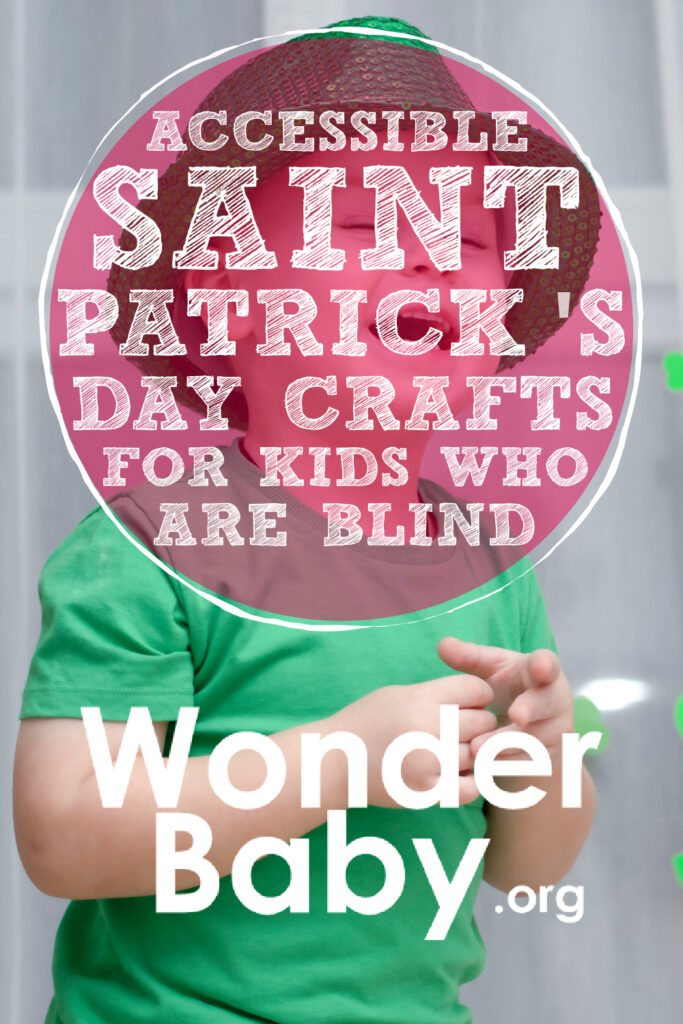
Related Posts

Eye Conditions and Syndromes, Visual Impairment
Neuralink Announces Plans to Restore Sight to the Blind with Brain Chip
Elon Musk’s company Neuralink has announced plans to begin human trials of its new “Blindsight” brain chip by the end of 2025.

Special Needs
5 Spring Cleaning Tips for Families of Children with Disabilities
Spring cleaning is an opportunity to create a more accessible, organized, and supportive space for your child with disabilities. Declutter, deep clean, and refresh!

Visual Impairment
The Gift of Understanding: How a Young Child Helps His Blind Father Navigate Life
When a parent is blind, it’s natural for people to wonder how their sighted child will adapt. Will they struggle to understand their parent’s needs? Will they feel burdened by...

